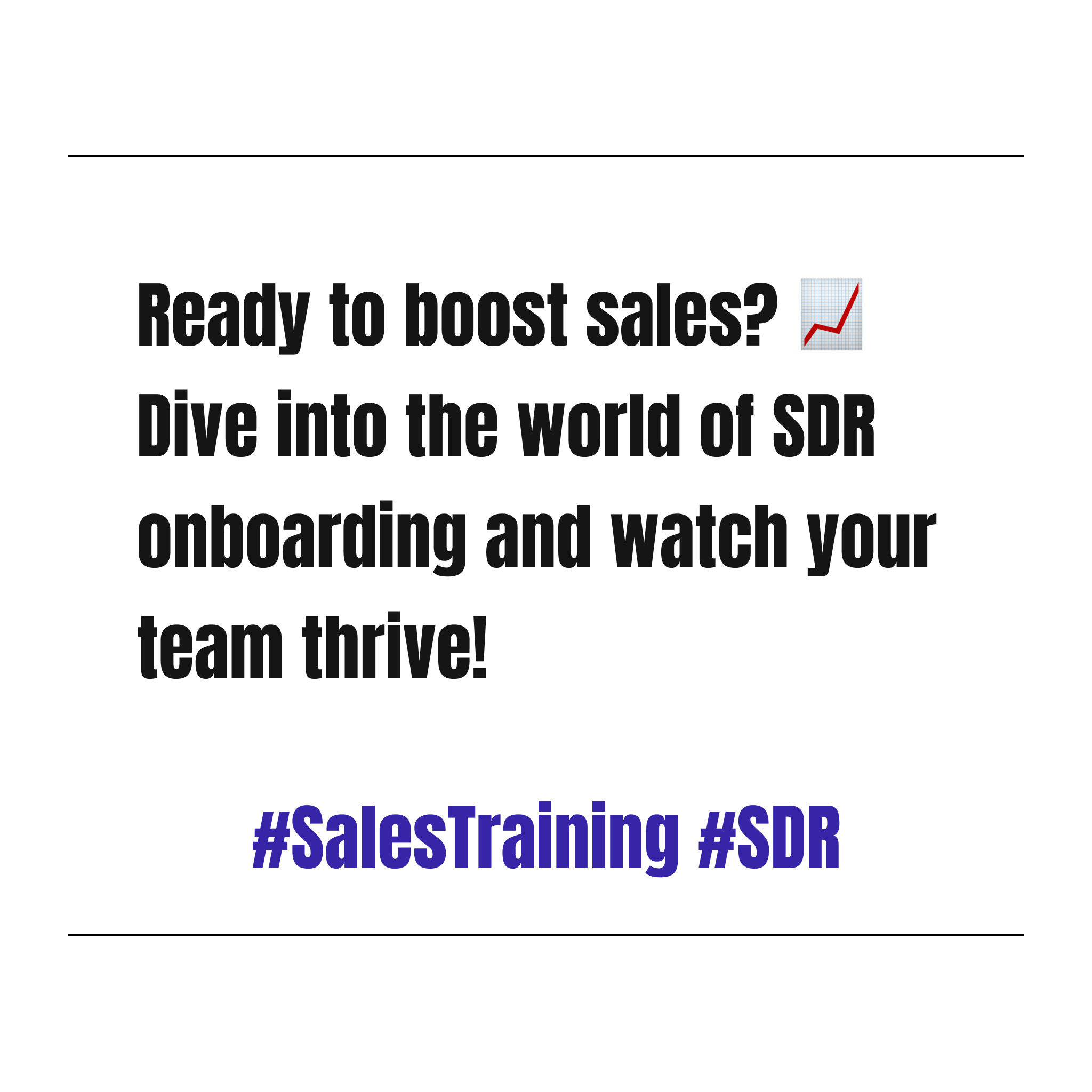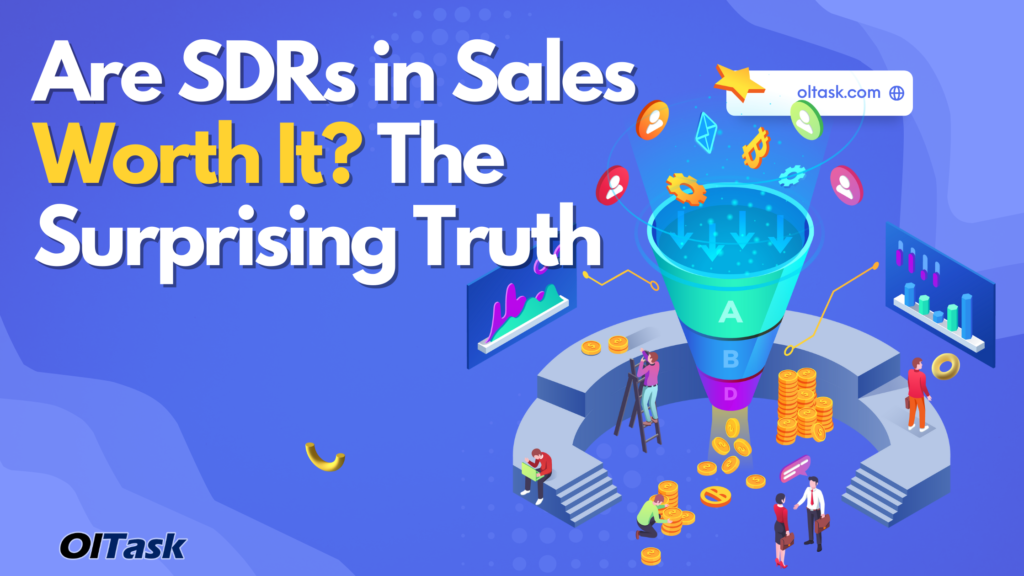Sales Development Representatives (SDRs) are the backbone of modern sales teams, playing a crucial role in driving revenue growth and building relationships with potential customers. If you're exploring a career in sales or want to understand how SDRs contribute to a company's success, this article will provide all the information you need. From defining what an SDR is to exploring their responsibilities, skills, and career growth opportunities, we'll cover everything comprehensively.
As the business world evolves, the importance of sales development roles has grown significantly. SDRs are responsible for prospecting, qualifying leads, and setting up meetings for account executives. Their ability to connect with prospects and convert them into qualified opportunities directly impacts a company's bottom line.
In this article, we'll delve into the intricacies of the SDR role, exploring its significance in sales strategies, the skills required to excel, and how to build a successful career in this dynamic field. Whether you're a beginner or an experienced professional, this guide will equip you with the knowledge to navigate the world of sales development effectively.
Read also:Meet Tim Kennedys Wife A Closer Look At Their Life Together
Table of Contents
- What is an SDR in Sales?
- Role and Responsibilities of an SDR
- SDR vs. BDR: Understanding the Differences
- Key Skills Every SDR Should Possess
- The SDR Sales Process Explained
- Essential Tools for SDRs
- Career Growth Opportunities for SDRs
- Challenges Faced by SDRs
- How to Become an SDR
- Conclusion
What is an SDR in Sales?
A Sales Development Representative (SDR) is a professional who focuses on identifying and engaging potential customers to generate qualified sales opportunities. SDRs work closely with marketing and account executives to ensure that leads are properly nurtured and converted into paying customers. Their primary goal is to move prospects through the sales funnel by conducting outreach, qualifying leads, and setting up meetings for the closing team.
SDRs are often the first point of contact for prospects, making their role critical in shaping the initial impression of a company. They must possess excellent communication skills, a deep understanding of the product or service they are selling, and the ability to navigate complex sales cycles.
According to a report by the Forbes, SDRs are increasingly becoming vital to a company's growth strategy, with many organizations investing heavily in building robust sales development teams.
Role and Responsibilities of an SDR
Daily Tasks of an SDR
SDRs have a variety of tasks that they perform daily to ensure they meet their quotas and contribute to the team's success. Some of the key responsibilities include:
- Prospecting: Identifying potential customers through various channels such as LinkedIn, email, and cold calling.
- Outreach: Reaching out to prospects via phone calls, emails, and social media to initiate conversations.
- Qualifying Leads: Assessing the needs and fit of potential customers to determine if they are a good match for the company's offerings.
- Scheduling Meetings: Coordinating with prospects to set up meetings with account executives for further discussions.
Collaboration with Other Teams
SDRs work closely with marketing and account executives to ensure a seamless sales process. They rely on marketing for lead generation and nurturing, while they provide valuable insights to the closing team about prospect needs and objections.
Effective collaboration between these teams can significantly enhance the overall sales performance of an organization. According to a study by HubSpot, companies with aligned sales and marketing teams experience a 36% higher customer retention rate.
Read also:Jennifer Rauchet Kids Unveiling The Life And Journey Of A Beloved Personality
SDR vs. BDR: Understanding the Differences
While the terms SDR (Sales Development Representative) and BDR (Business Development Representative) are often used interchangeably, they represent distinct roles within a sales organization. SDRs primarily focus on outbound prospecting and setting up meetings for account executives, whereas BDRs are more involved in identifying and nurturing long-term business opportunities.
Key differences between SDRs and BDRs include:
- SDRs typically focus on short-term sales cycles, while BDRs work on longer-term strategic partnerships.
- SDRs are responsible for generating qualified leads, whereas BDRs may also be involved in account management and relationship building.
Understanding these distinctions is crucial for organizations looking to structure their sales teams effectively.
Key Skills Every SDR Should Possess
Communication Skills
Effective communication is at the heart of an SDR's role. Whether it's crafting compelling email subject lines or delivering a persuasive pitch over the phone, SDRs must be able to articulate value propositions clearly and concisely.
Tips for improving communication skills:
- Practice active listening to better understand prospect needs.
- Use storytelling techniques to make your message more relatable.
- Adapt your communication style to match the preferences of different prospects.
Technical Proficiency
Modern SDRs rely heavily on technology to streamline their workflows and improve productivity. Familiarity with CRM systems, email automation tools, and sales intelligence platforms is essential for success in this role.
Recommended tools for SDRs:
- CRM Software: Salesforce, HubSpot
- Email Automation: Outreach, Yesware
- Sales Intelligence: LinkedIn Sales Navigator, Clearbit
The SDR Sales Process Explained
The SDR sales process involves several stages, each designed to move prospects closer to becoming paying customers. These stages include:
- Prospecting: Identifying potential customers and gathering relevant information.
- Outreach: Initiating contact with prospects through personalized messages.
- Qualification: Assessing the fit and needs of prospects to determine their readiness to buy.
- Scheduling: Coordinating meetings with account executives for further discussions.
Each stage requires a different set of skills and strategies, making it essential for SDRs to be versatile and adaptable in their approach.
Essential Tools for SDRs
CRM Systems
Customer Relationship Management (CRM) systems are indispensable for SDRs, providing a centralized platform to manage leads, track interactions, and collaborate with other team members. Popular CRM options include Salesforce, HubSpot, and Zoho CRM.
Email Automation Tools
Email automation tools help SDRs scale their outreach efforts by sending personalized messages to large numbers of prospects. Platforms like Outreach and Yesware offer advanced features such as tracking opens, clicks, and replies, enabling SDRs to optimize their campaigns.
Career Growth Opportunities for SDRs
SDRs have numerous opportunities for career advancement within the sales field. Many SDRs transition into roles such as Account Executive, Sales Manager, or even Sales Leadership positions. The skills and experience gained as an SDR provide a solid foundation for success in these higher-level roles.
To accelerate career growth, SDRs should focus on:
- Continuously improving their sales skills through training and mentorship.
- Building strong relationships with colleagues and industry professionals.
- Taking on additional responsibilities and demonstrating leadership potential.
Challenges Faced by SDRs
Despite the rewarding nature of the role, SDRs face several challenges in their day-to-day work. These include:
- Rejection: Dealing with frequent rejections and maintaining a positive mindset can be difficult.
- Time Management: Balancing multiple tasks and priorities requires excellent organizational skills.
- Competition: Navigating crowded markets and standing out among competitors is a constant challenge.
Overcoming these challenges requires resilience, adaptability, and a commitment to continuous improvement.
How to Become an SDR
Becoming an SDR requires a combination of education, skills, and experience. While a formal degree in sales or business is not always necessary, possessing strong communication skills, a passion for sales, and a willingness to learn are essential.
Steps to becoming an SDR:
- Gain relevant experience through internships or entry-level sales positions.
- Develop key skills such as prospecting, qualifying leads, and using CRM systems.
- Network with professionals in the industry to learn about job opportunities.
With dedication and perseverance, anyone can succeed as an SDR and build a fulfilling career in sales.
Conclusion
In conclusion, Sales Development Representatives (SDRs) play a vital role in driving revenue growth and building relationships with potential customers. By understanding their responsibilities, acquiring the necessary skills, and leveraging the right tools, SDRs can achieve success in this dynamic field.
We encourage you to take the next step in your journey by exploring job opportunities, improving your skills, and networking with other professionals in the industry. Don't forget to share this article with others who may benefit from it and leave a comment below with your thoughts and questions.
Remember, the world of sales is constantly evolving, and staying informed and adaptable is key to long-term success. Thank you for reading, and we wish you all the best in your sales development endeavors!


